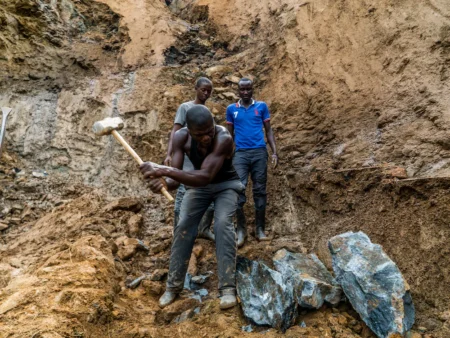- The World Bank plans to ease lending terms to increase liquidity.
- Increased disposal income will help reduce global poverty.
- Countries required to highlight financial inclusivity plans.
The World Bank is “taking bold new steps to increase its lending capacity”, a move that will likely trigger various implications for individuals, businesses, and economies across Africa.
In July, US Treasury Secretary Janet Yellen urged further reform of the World Bank and other multilateral development banks. Yellen said capital increases will be an option once these institutions make changes to increase their capacity to assist nations in addressing climate change and other issues.
At the same time, the World Bank President Ajay Banga stated, “We are moving quickly. While we are constructing a better bank, a larger bank will eventually be required.”
Increased lending by the world’s biggest lender will mean increased liquidity all around the world. What this means is that you will, theoretically speaking, have more money at hand.
In economic terms, having more cash at your disposal is technically referred to as having more “disposable income”. What this means is that individuals have more money to spend, which sounds good to me.
The World Bank’s lending plan
So, based on the theory part of things, the World Bank’s increased lending plan is welcomed by all. The trouble is, will the multiplier effect, will higher lending mean more ‘disposable income’ to the common man?
First, let’s hear what the World Bank itself has to say about its intended plan to increase loan issuance. Bigger loans, “will give millions of people a chance to escape poverty and improve their lives.”
“At this critical moment in history, and echoing the calls from the international community, the Bank is doubling down to tackle intertwined challenges – jobs, climate, fragility, and pandemics,” reads the report.
And; “These efforts entail decisive action to build a better Bank to achieve a world free of poverty on a livable planet.”
“Doubling down to tackle intertwined challenges,” what the World Bank is really trying to say here is that; ‘the challenges of the world need more money to tackle,’ explains Prof. John Ragnar from the University of York.
The expert however cautions that what are the tools the lender will use to increase its loan issuance. Which begs the question, will this guarantee financial inclusivity?
The World Bank says, to realize this ambitious plan; “The work includes a new playbook to drive impactful development and take more risk—helping create a world that is inclusive of everyone, including women and young people, resilient to shocks, and sustainable.”
“The Bank has taken a hard look at all available options as part of a work plan to stretch every dollar—while preserving its AAA credit rating,” it adds.
Exploring new opportunities
So what the Bank is saying that part of the tools it will use is ‘usurping more risks.’ While it was not laid outright this may mean easing the lending terms. Essentially this allows more countries and organisations to borrow bigger amounts, frequently.
“Together, the steps announced today will greatly expand the bank’s financial capability to spur growth and jobs—the surest path out of poverty,” the bank announced.
“Without progress on this front, the development will stall at best and slide backward at worst,” the bank admitted.
The Bank explains that over the course of the next few months, it will “develop and share additional ideas to maximize its impact, exploring new opportunities while carefully managing potential risks.”
“The potential for these instruments to extend the impact of a single dollar is game-changing. For example, every new $1 could drive an additional $6 of new lending over a 10-year period,” reads the hope-filled report.
“In addition to the actions announced today, the Bank recently unveiled other initiatives to put impact at the heart of its work,” the report explains.
As of last month, the Bank had already announced the establishment of a new Private Sector Investment Lab. The Private Sector Investment Lab will generate, test, and scale impactful ideas that will in turn help to remove barriers to investment, especially in emerging markets.
“The Bank also introduced an enhanced toolkit to help countries respond quickly and effectively to natural disasters and jumpstarted an effort to develop a new approach to tracking climate outcomes more effectively, one that better measures impact, rather than dollars out the door,” the report sums up.
Also Read: World Bank tool set to lower data collection costs
World Bank instruments to increase lending
- Increasing the power of guarantees World Bank shareholders can provide to boost lending. The proposed portfolio guarantee program is a shared approach to risk that will make World Bank financing more widely available. Shareholders will step in if countries can’t repay their loans.
That means US$5 billion in guarantees could generate $30 billion in lending over 10 years.
In turn, the raised funds can be used to send more girls to school. They can also support farmers struggling to cope with climate change, or provide vital health care.
- Raising hybrid capital from shareholders and other development partners. Hybrid capital offers a new way to move the needle in development by giving shareholders and partners an opportunity to invest in bonds with special leveraging potential.
With US$1 billion of hybrid capital, the Bank can increase its lending by up to US$6 billion over 10 years and deepen its impact on the people who are most in need.
- Extracting more value from callable capital. Callable capital is a commitment from our shareholders to step in with new funds. This will help the bank only under extreme circumstances.
Widening the conditions, and clarifying the procedures under which the Bank can call on shareholders can help expand lending. More work will need to be done together with rating agencies and shareholders to make callable capital more useful.
Lending to poorest countries
- Moving forward with the IDA Crisis Facility. The poorest countries desperately need more concessional funds to respond to climate, food insecurity, and other crises.
The bank is fundraising for the new IDA Crisis Facility. This will strengthen its ability to help countries in challenging times. The target is $6 billion and there is a huge development impact from every dollar that will be invested.
Source of World Bank Tools and Instruments: The World Bank.











